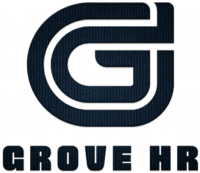In 2025, a startup with fewer than 50 employees can deploy a fully functional 360-degree feedback system at no cash cost by combining the right freemium platforms or time-unlimited trials.
Even the most stripped-down free tier now offers anonymous surveying, multi-rater workflows, and auto-generated reports—capabilities that five years ago required an enterprise contract priced at 4,0000 to 10,00000 per year.
The trade-off is not money but careful tool-matching: some vendors cap active participants (Spidergap at five), others meter monthly responses (SurveySparrow at 100), and a few give you a 14-day sprint to harvest enterprise-grade analytics before the paywall drops (Culture Amp, Lattice).
For cash-sensitive founders, the decision boils down to three concrete factors: headcount, data depth, a nd effort. If you need feedback for ten people tomorrow, Google Forms plus Sheets automation delivers it in an hour—zero vendor risk, total manual analysis.
If you want comparative heat-maps and competency coaching baked in, Betterworks Engage’s free 50-seat tier or Teamflect inside Microsoft Teams covers the gap while still costing nothing.
And if you’re road-testing a long-term people-ops stack before Series A, 14-day sandboxes from Culture Amp, Leapsome, or Lattice let you benchmark culture, export the CSVs, and walk away without paying a cent.
1. Google Forms + Google Sheets
| Free-plan limit | Core 360 features | Notable strengths | Trade-offs | Ideal for |
| Unlimited users & surveys | Anonymous surveys, branching logic, raw data in Sheets | Zero cost, instant setup, total design freedom | Manual analytics, no workflow automation | Pre-seed teams that need feedback tomorrow a zero budget |
Google’s survey stack is the scrappiest way to launch a 360 program: open Forms, copy a question bank (competencies, rating scales, open comments), tick “Collect emails—No,” and share the link.
Responses flow into Sheets where founders can pivot counts, chart distributions, or script automatic anonymized decks via Apps Script. Because data never leaves Workspace, legal review is easy—no extra contracts, no third-party risk.
The downside is elbow grease: someone must chase laggards, build dashboards, and redact identifying phrasing in comment exports. Still, for a five-person AI studio that runs quarterly retros, this DIY loop happily survives until Series A cash arrives.
2. Spidergap

Free-plan limit
Core 360 features
Notable strengths
Trade-offs
Ideal for
5 active subjects
Ready-made 360 templates, automated reports
Clean narrative reports, competency heatmaps
Hard cap on participants; upgrade jumps to paid
Solo founders coaching first hires or pilot cohorts
Spidergap’s wizard walks a manager through creating an “Assessment Project”—choose a competency model, invite raters, set deadlines, then let the platform chase responses. Reports arrive as traffic-light bars plus prioritized development tips—so the feedback conversation starts at “what to try next,” not statistics.
A three-person design agency ran Spidergap on its creative lead, spotted a pattern of “missed brief details,” and set a monthly peer-review checkpoint that halved rework hours. Once the five-person cap feels cramped, the paid tier’s per-subject pricing is straightforward, easing the jump to company-wide adoption.
3. Culture Amp (Trial)
View this post on Instagram
Free-plan limit
Core 360 features
Notable strengths
Trade-offs
Ideal for
Full suite for 14 days
Science-backed question banks, heat-map analytics, and action planning
Enterprise-grade psychometrics; benchmark data
Trial expires—costly afterward
Founders road-testing people-ops tech before scale-up hiring
Culture Amp’s trial is a pressure-test for culture ambitions: spin up a full 360, pulse engagement, and compare your scores against 6,000-company benchmarks. Its “Impact” engine highlights which competency gaps most damage engagement, steering scarce coaching resources where they matter.
A 28-seat fintech ran the trial, discovered “clarity of decision-rights” was a bigger stressor than pay, and replaced daily stand-ups with an OKR dashboard, gaining two focus hours per engineer. If the budget is tight, export the CSV on day 13; the insights stay valuable even after the login closes.
4. Teamflect

Free-plan limit
Core 360 features
Notable strengths
Trade-offs
Ideal for
Unlimited users on freemium
Feedback, reviews, goals inside Microsoft Teams
Lives where Teams users already collaborate; instant praise cards
Requires Microsoft 365 tenancy; limited analytics free
Hybrid companies glued to Teams chat and calendars
Teamflect installs as a side-panel app: click a teammate, issue praise, request feedback, or schedule a review—all without leaving a chat thread. Because data rides Microsoft Graph, security reviewers smile, and single sign-on is automatic.
A 12-person legal-tech startup replaced a patchwork of Word docs and email chains with Teamflect: quarterly reviews now autofill meeting agendas, and lawyers drop real-time kudos after tough client calls. Advanced analytics (nine-box grids, trend dashboards) live behind the paid wall, but most formative feedback flows happily in the free core.
5. Trakstar Perform (Trial)
| Free-plan limit | Core 360 features | Notable strengths | Trade-offs | Ideal for |
| 30-day full access | Review cycles, peer ratings, goal alignment | Highly configurable forms, weighted competencies | Short trial; pricing scales by seat | Ops-minded founders designing repeatable appraisal workflows |
Trakstar mirrors a classic HRIS review cycle: build a form, schedule it, nudge participants, then lock results for calibration. You can weight competencies (e.g., “Customer Empathy = 20 % of score”) or attach OKRs, giving data-driven founders a neat numbers game.
A six-store e-commerce brand piloted Trakstar, found fulfillment-center supervisors lagging on “delegation,” and built a buddy program that trimmed overtime costs by 11 %. Unless you convert to paid, export PDF reports before the countdown ends.
6. SurveyMonkey

Free-plan limit
Core 360 features
Notable strengths
Trade-offs
Ideal for
Unlimited surveys, 10 responses per survey/month
360 templates, skip logic, basic charts
Polished UI, easy branding, multilingual support
Response cap forces staggered cycles
Client-facing teams gathering small but regular feedback snapshots
SurveyMonkey’s free tier shines when you need polish more than volume. A boutique consultancy sends separate links to each rater cohort—client, peer, manager—then merges CSVs in one dashboard.
Skip logic personalizes questions (“If you supervised Alice, rate leadership; else skip”). Ten responses/month means a 12-person team runs groups in waves—time-consuming but cost-free. Export graphics straight into board decks for credible storytelling.
7. Betterworks Engage
We at @Betterworks are excited to announce our acquisition of Hyphen, a leading continuous employee listening and #engagement platform! Hyphen’s survey, polling and recommendation capabilities will be known as Betterworks Engage. For more information: https://t.co/ZUfP1fY67e
— Betterworks (@Betterworks) February 20, 2020
Free-plan limit
Core 360 features
Notable strengths
Trade-offs
Ideal for
50 active users
Feedback cycles, pulse surveys, action plans
High user cap, sentiment heatmaps link to goals
Some advanced dashboards locked
Startups graduating from informal Slack polls to structured culture tracking
Betterworks Engage marries pulse questions (“Do you have what you need to succeed?”) with 360 reviews so leaders can see whether coaching moves the culture needle.
A 40-headcount logistics startup spotted a dip in “growth opportunities” scores among dispatchers; pairing dispatchers with engineers for ride-alongs spiked engagement by 17 % in six weeks. Free usage ends at 50 seats—but that may cover the whole org until Series B.
8. Fellow.app
| Free-plan limit | Core 360 features | Notable strengths | Trade-offs | Ideal for |
| Unlimited users & meetings | Meeting-embedded feedback, real-time notes | Fits naturally into recurring 1:1s and retros; Slack/Zoom integrations | Not a formal review cycle engine | Remote squads that prefer conversational feedback over quarterly paperwork |
Fellow turns every meeting agenda into a micro-feedback loop: after demos, teammates rate clarity; after sprint retros, they vote on process tweaks. Data aggregates into a personal feedback stream managers can reference during promotion talks.
A distributed product trio used Fellow to replace end-of-sprint survey docs: they now tag action items inline and auto-push them to Jira. Formal 360 analytics are thin, but cultural pulse stays constant.
9. Primalogik

Free-plan limit
Core 360 features
Notable strengths
Trade-offs
Ideal for
10 employees
Full 360 reviews, instant PDF reports
Straightforward UI, email reminders, development tips
Analytics is lighter than its enterprise peers
Very small teams that want an HR-style report without HR headcount
Primalogik’s interface feels like a mini-HR suite: create roles, assign competencies, launch a cycle, and let automated nudges chase respondents. The PDF report highlights the highest-variance items, so coaching starts with the hottest gap.
A five-person biotech lab used Primalogik to get external advisor feedback on its CTO; the “strategic communication” gap triggered a presentation-skills workshop that helped secure NIH funding.
10. Leapsome (Trial)
View this post on Instagram
Free-plan limit
Core 360 features
Notable strengths
Trade-offs
Ideal for
14-day sandbox
Reviews, OKRs, learning paths
Cohesive performance + learning ecosystem
Trial short; paid tier premium
Post-seed teams testing mature people-ops stack
Leapsome links every 360 comment to a competency framework and optional learning module, so “improve stakeholder communication” can launch a course inside the same platform.
A 25-person AI tooling company demoed Leapsome, mapped OKRs to competencies, and visualized which strengths underpinned highest-scoring squads. Even if you don’t buy, the exercise clarifies what capability matrix you’ll need later.
11. Peergrade

Free-plan limit
Core 360 features
Notable strengths
Trade-offs
Ideal for
Unlimited users, courses, assignments
Peer evaluation workflows, anonymity options
Free forever, rubric-based reviews
Academic-leaning UI; no dashboards
Flat or volunteer teams fostering peer learning cultures
Peergrade was born for classrooms, but its rubric builder lets any team create criteria (“Collaboration”, “Code readability”) and calibrate scoring guidelines.
A 30-member open-source community adopted Peergrade, asking contributors to review each other’s pull-request etiquette quarterly, which boosted merge speed by 20 %. Data exports to CSV for home-grown analysis.
12. Lattice (Trial)
@latticehqUnderstand how your team is engaging in setting growth goals, seeking and giving feedback, and more with our Teams Summary page! Sophie Hurcombe, Senior Director of People Partnering at Lattice, shares a peek at what you can do with your team dashboard.♬ original sound – latticehq
Free-plan limit
Core 360 features
Notable strengths
Trade-offs
Ideal for
14-day full suite
Reviews, real-time feedback, growth frameworks
Enterprise polish, integration with Slack, G-Suite
Steep pricing post-trial
Venture-backed startups preparing for 100+ hires within a year
Lattice is performance management with bells on—growth paths, calibration grids, engagement pulses. During the trial, a seed-stage cybersecurity firm ran a single company-wide 360 to establish baselines before doubling staff.
The platform’s heatmap showed junior engineers craving clearer priorities, prompting leadership to adopt weekly OKR check-ins. Even if the cost feels heavy later, the insight informs org-design choices.
13. Honestly

Free-plan limit
Core 360 features
Notable strengths
Trade-offs
Ideal for
10 users
Surveys, pulses, anonymous comments
Real-time dashboards, mobile app
Limited seats; export only in paid tier
Tiny remote teams that want anonymity without complexity
Honestly’s widget-style pulses drop a single question in Slack or email (“How supported do you feel this week?”). Over months, that data trends into a morale chart that managers can filter by squad.
A seven-person crypto marketing crew used Honestly’s 360 survey to surface client-communication friction, then set a new “reply in < 4 hrs” SLA.
14. SurveySparrow
| Free-plan limit | Core 360 features | Notable strengths | Trade-offs | Ideal for |
| Unlimited surveys, 100 responses/mo | Conversational 360 forms, mobile-first design | Fresh UI, white-label themes, video embeds | Response cap may choke growing teams | Customer-centric startups wanting on-brand feedback flows |
SurveySparrow’s chat-style interface feels like WhatsApp: questions slide in, ratings appear as emoji bars, and completion rates spike on mobile. A boutique DTC clothing brand sent 360 links to warehouse pickers, stylists, and founders; the playful interface tripled comment length versus previous Google Form runs.
When response volume grows, teams can rotate cohorts monthly or upgrade.
15. Google Workspace Automation (Forms + Sheets + Apps Script)

Free-plan limit
Core 360 features
Notable strengths
Trade-offs
Ideal for
Unlimited (within Workspace quota)
Custom surveys, scripted reminders, Looker dashboards
Full data ownership, endless customization
Requires scripting skill, time to build
Technical founders who love home-grown tooling
By coupling Forms with Apps Script, you can auto-mask emails, send nudges to non-responders, and pipe results into Looker Studio for slick dashboards. One four-engineer dev shop coded a feedback bot that posted anonymized charts to Slack every quarter; teammates reacted live and voted on action items.
Build cost? A Sunday afternoon and one cup of coffee—then zero vendor fees forever.
Closing Reflection
Every tool above gets you multi-rater insight without opening the corporate wallet. The decision hinges on volume (head-count vs. free caps), analytics needs, and how much process you’re willing to own.
Start ultra-lean with Google Forms or Peergrade, or pilot a premium suite like Culture Amp to test advanced analytics before fundraising. Either way, the sooner feedback becomes multi-directional, the sooner your startup’s talent compounds alongside its revenue.

